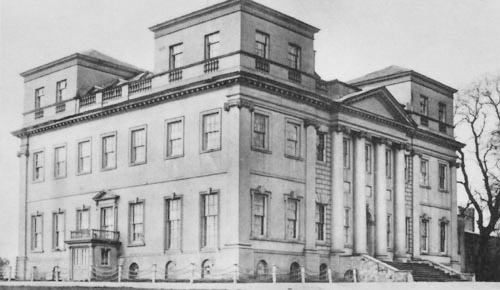Four Oaks Hall was the only house in Victorian Sutton Coldfield to have a full complement of servants - butler, housekeeper, cook, valet, footman, postillion, groom, ladies maids, laundry maids, housemaids, stillroom maid, dairymaid, scullery maid and under-butler.
Twenty-five in all, thirteen women and twelve men, serving the household consisting of Sir William Hartopp, Jane his wife, three grown-up daughters and a 14-year-old son. The visitors at the time of the 1861 census, with their own servants, were 18-year-old Marquis of Hastings, 9-year-old Earl of Guildford with his mother and brother, and a naval officer.
The Hartopps held themselves aloof from Sutton society, and none of their servants was from a local family except Sarah Camp, aged 21, the scullery maid from Perry Barr. Servants with local relatives might have spread unwelcome gossip about the doings in the big house, so it was safer to take on staff like the young housemaid, Elizabeth Parsons, a native of Wiltshire.
All the female staff were unmarried, but two of the men, Thomas Haywood the cook and Samuel Goodman the under-butler were married, but their wives did not live in.
There were other big houses in Sutton in 1861, but with fewer servants. Thomas Chavasse of Wylde Green House, for example, had six servants, all female, living in. He was a consulting surgeon living there with his second wife, three grown-up children and five younger ones; one of the servants was a governess and another a nursemaid (the youngest child was four years old). Only the parlourmaid, Emma Sheffield, was a native of Sutton Coldfield, the rest were from other parts of the Midlands.
A successful businessman living in a Victorian villa residence in Sutton would usually have no more than two servants living in. Thomas Hayward, a farmer and timber merchant employing 14 men and a boy lived in a villa in Maney with his wife Ann; his household included two general servants, a 46-year old Birmingham woman and a girl aged 14 from Sutton Coldfield.
A household income of £150 per annum was reckoned to be necessary before a servant could be taken on in 1860, but sometimes much poorer families felt the need for a servant. One such family lived in a terraced cottage on the Parade; Richard Williams worked in the Spade Mill at Powells Pool, and his wife Jemima needed help with her two babies. They were able to take on a servant, Emma Bates, aged 11, probably by agreement with Emma’s family. Richard probably knew William Bates, passing his cottage in Driffold Lane on the way to work; William was an agricultural labourer who had had five daughters, and by 1861 there was one daughter at home and a 2-year-old grandson. Emma had no doubt helped to look after her baby nephew, so was well able to serve Mrs. Williams with her two infants.
